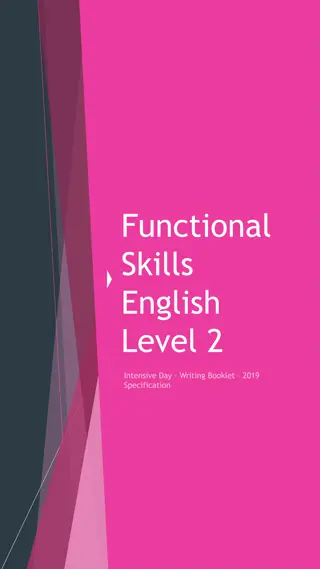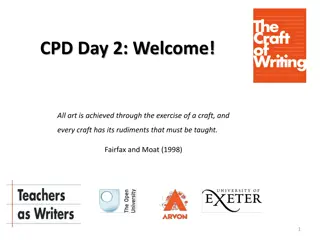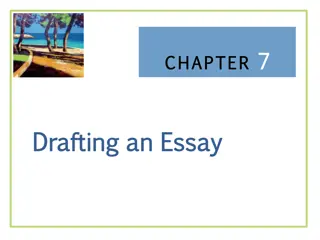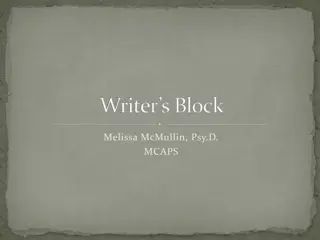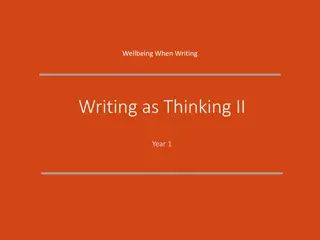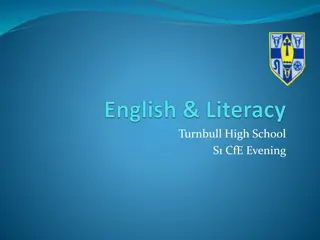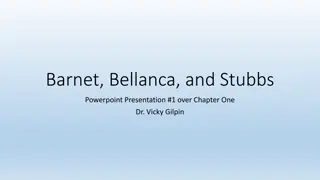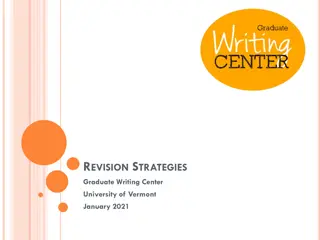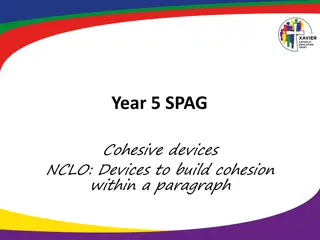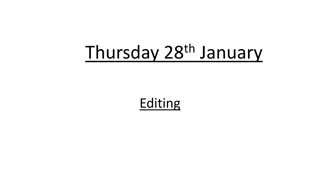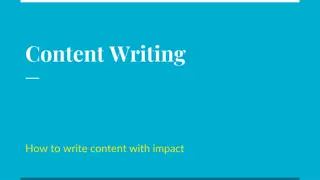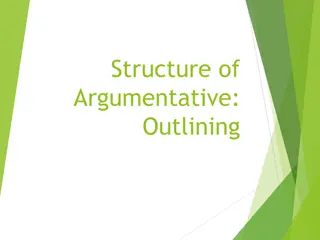Effective Outlining Techniques for Better Writing
Learn how to write a structured outline to organize your ideas effectively. Explore different methods and tools such as reverse outlines, graphic organizers, sequence order, story maps, and compare & contrast techniques. Enhance your writing process by creating well-structured outlines that improve the flow and coherence of your written work.
Download Presentation

Please find below an Image/Link to download the presentation.
The content on the website is provided AS IS for your information and personal use only. It may not be sold, licensed, or shared on other websites without obtaining consent from the author. Download presentation by click this link. If you encounter any issues during the download, it is possible that the publisher has removed the file from their server.
E N D
Presentation Transcript
How to Write an Outline URI Graduate Writing Center, Spring 2021
Organize Your Ideas Why should you prepare an outline? ?
Structuring your outline: You don t have to draft the paper in this same order! Try writing the body, then intro, then conclusion. 1. Introduction a. b. c. 2. Body a. Interesting opening hook Background info Thesis statement 1st main supporting point topic sentence(s) i. Supporting arguments and information 2nd main supporting point topic sentence(s) i. Supporting arguments and information 3. Conclusion a. Reiterate thesis statement b. Summarize supporting arguments b.
Structuring your outline: IMRAD formatted manuscripts* 1. Introduction a. Set the context i. Credible background information ii. Previous research Define the knowledge gap Outline your objectives, hypotheses, or research questions 2. Methods a. Study site b. Study population c. Research steps 3. Results a. Follow the same layout as the methods section 4. Discussion/Conclusion a. link back to introduction, come full circle b. How did this research fill a knowledge gap b. c.
Reverse Outlines: Produce an outline from a draft Ideas evolve as you write, so sometimes a reverse outline may better suit your needs If you write to think Checks your organization Identify main points to easily move sections around in your draft You can do both! Compare your reverse outline to your original outline
1. Using Graphic Organizers a) b) Visual Strategies for Outlining
Sequence Order events Timeline of events Steps in a process Relationship between cause & effect
Story Map Helps students identify & examine different parts of the reading Non-fiction and fiction Learn to summarize the reading
Compare & Contrast How are they alike How are they different Where circles overlap, similarities Venn Diagram
Concept Map Main idea Sub topics Constantly thinking about how the events, facts, ideas are related






